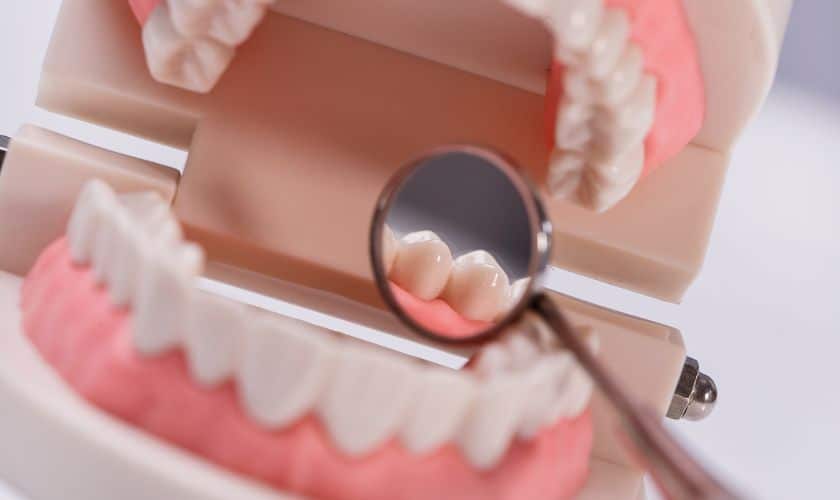
Dental bridges are an excellent way to restore functionality and aesthetic appeal to your smile. They are customized to fit comfortably in your mouth, but just like natural teeth, they require proper care and maintenance. Neglecting your dental bridge can lead to discomfort, infection, or even tooth loss. In this blog post, we will share the top 5 aftercare tips for maintaining your dental bridges so you can keep them in top condition for years to come!
Cleaning Your Bridge Every Day
Cleaning your dental bridge every day is essential for maintaining good oral hygiene and preventing any potential problems. Here are some tips on how to clean your bridge effectively:
Firstly, use a soft-bristled toothbrush to brush your teeth thoroughly twice a day. Make sure you brush the bridge carefully and gently, ensuring that all surfaces of the bridge are cleaned properly.
Secondly, you can also use an interdental brush or floss threader to clean between the gaps in the teeth where food debris might accumulate. Gently work around each side of the tooth and under the gum line to ensure proper cleaning.
Thirdly, rinsing with an antiseptic mouthwash can help eliminate bacteria in hard-to-reach areas of your mouth. Use it as directed by your dentist or according to product instructions.
Avoid using abrasive products like baking soda or harsh whitening toothpaste as they may scratch or damage your dental bridge over time.
Keeping up with regular daily cleaning habits will not only maintain healthy gums but also extend the lifespan of your dental bridges.
Flossing Every Day
Flossing every day is a crucial step in maintaining your dental bridges. It helps remove food particles and plaque buildup that brushing alone cannot reach. Here are some tips for effective flossing:
1. Use the right floss – choose a type of floss that works best for you, such as waxed or unwaxed, flavored or unflavored.
2. Start with enough length – use about 18 inches of floss and wind most of it around one finger on each hand.
3. Glide gently – slide the floss between your teeth using a back-and-forth motion, making sure to curve it at the base of each tooth.
4. Don’t forget the gum line – gently push the floss against the side of each tooth, creating a “C” shape to clean along the gum line.
5. Be thorough but gentle – avoid snapping or forcing the floss into place as this can damage your bridge or cause bleeding gums.
Remember to be consistent with your daily oral care routine by incorporating regular brushing and professional cleanings into your schedule!
Checking For Loose Or Missing Teeth Every 6 Months
One of the key elements in maintaining your dental bridges is to regularly check for any loose or missing teeth. This should be done every six months, as it allows you to catch any issues early and prevent further damage.
When checking for loose teeth, use your tongue to feel around the bridge area and see if anything feels out of place. If there are any signs of looseness or movement, make an appointment with your dentist immediately.
Missing teeth can also cause problems with your dental bridge, so it’s important to keep an eye out for them as well. Check the surrounding gums and remaining teeth carefully; if you notice anything unusual or missing altogether, schedule a visit with your dentist right away.
Taking these steps every six months can help prolong the life of your dental bridge and ensure that it continues to function properly. Don’t neglect this essential aspect of aftercare!
Checking For Gum Disease Once A Year
Checking for gum disease once a year is crucial in maintaining the health and longevity of your dental bridges. Gum disease, also known as periodontitis, can lead to tooth loss if left untreated. Here are some tips on how to prevent and detect gum disease:
Firstly, maintain good oral hygiene by brushing twice a day with fluoride toothpaste and using an antiseptic mouthwash daily. Flossing at least once a day is also important in removing plaque buildup that can cause gum disease.
Secondly, watch out for symptoms such as bleeding gums when brushing or flossing, bad breath, loose teeth, or receding gums. If you experience any of these symptoms, schedule a visit with your dentist immediately.
Thirdly, during your annual checkup with your dentist or hygienist ask them to examine your gums for signs of gingivitis or periodontitis. They may use tools like a probe to measure the spaces between teeth and gums which should be no more than 3mm deep.
If you have risk factors such as smoking or diabetes it’s important to inform your dentist so they can perform more frequent checkups on your oral health.
Taking care of our oral health goes beyond just cleaning our teeth but includes regular checks on our gum tissue too!
Maintaining A Healthy Diet And Avoiding Excessive Sugar Consumption
Maintaining a healthy diet is not only important for your overall health but also for the longevity of your dental bridges. Eating a balanced diet that includes plenty of fruits and vegetables, lean proteins, and whole grains can help keep your teeth and gums in good condition.
When it comes to avoiding excessive sugar consumption, it’s not just about cutting out sweets. Sugar can be found in many foods and drinks that you might not expect. Be sure to check nutrition labels carefully when shopping for groceries.
One way to reduce your sugar intake is to limit sugary beverages such as soda, sports drinks, and fruit juices. These drinks are often loaded with added sugars that can contribute to tooth decay.
Instead, opt for water or unsweetened beverages like tea or coffee (without added sugars). If you do indulge in sugary treats or snacks occasionally, try to brush your teeth soon after to minimize the amount of time the sugar sits on your teeth.
By maintaining a healthy diet and avoiding excessive sugar consumption, you’ll be doing your part in keeping both your natural teeth and dental bridges strong and healthy.
Finishing Off
Now that you know the top five aftercare tips for maintaining your dental bridges, it’s time to put them into practice. Remember that taking care of your dental bridge is crucial for its longevity and proper functioning.
Make sure to clean your bridge every day with a soft-bristled toothbrush and non-abrasive toothpaste. Brushing twice a day, especially before going to bed, can help prevent plaque buildup and keep your teeth healthy.
Flossing every day is also important in removing food particles stuck between your teeth and preventing gum disease. Use floss threaders or interdental brushes to get under the bridge properly.
Checking for loose or missing teeth should be done regularly by scheduling an appointment with your dentist every six months. This will allow them to detect any issues early on before they become bigger problems.
Moreover, checking for gum disease once a year is equally important as it can lead to bone loss around the implant if left untreated.
Maintaining a healthy diet and avoiding excessive sugar consumption will not only benefit your overall health but also improve the condition of your dental bridge.
Remember these tips always so that you can enjoy a beautiful smile from healthy dental bridges!
